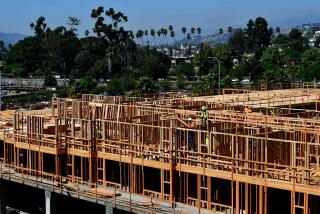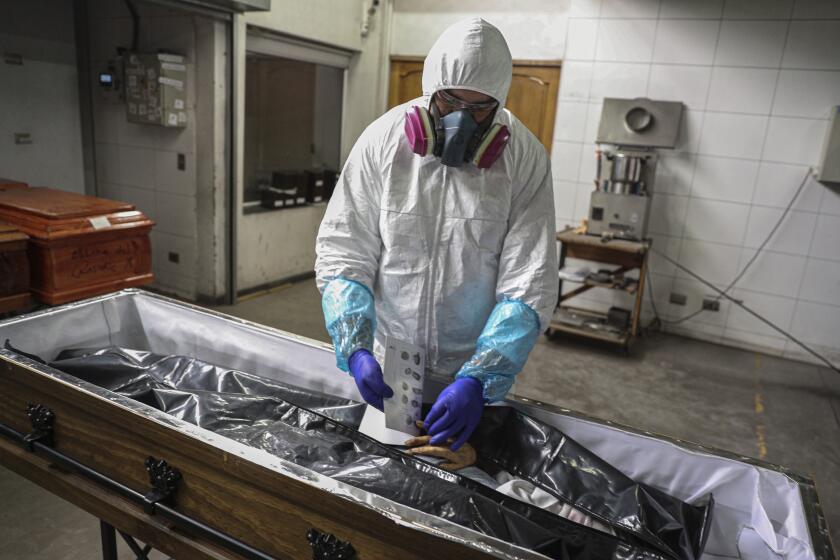Gringos on the lakeshore
Dan and Donna Williams conducted a meticulous search for the dream retirement locale: a place with temperate weather and a small-town atmosphere yet close to an international airport and good healthcare.
When the Arizona couple finally landed on the shores of Lake Chapala in central Mexico about 40 miles south of Guadalajara, they knew they had found their spot. But they resisted any temptation to become “margarita buyers”: first-time visitors who purchase quickly.
Instead, the pair spent two years hunting for a house, a three-bedroom home in a community called Riberas. They paid $43,000 in 1999 and spent the next few years doing a slow remodel, moving full time to Mexico in 2002.
“We didn’t want to rush,” said Donna, 59, a retired nurse. “You hear about people overpaying or wishing they had purchased somewhere else.”
Few couples are as thorough as the Williamses. But their choice of Lake Chapala underscores the desirability of the villages dotting the northwest shore of Mexico’s largest freshwater lake.
Situated in an elevated valley sheltered by the Sierra Madres, the lake area has one of the world’s most perfect climates. The average temperature is around 75 degrees, with low humidity. The sun shines almost daily, even in the rainy season in summer and early fall. Storms seem to come only at night.
“Things rarely get canceled here because of bad weather,” said Kent Edwards, a retired Alaska attorney general who owns an inn with his wife in the town of Ajijic. “We’re incredibly spoiled.”
He and others describe an ideal mix of indoor-outdoor, country-city living -- a laid-back lifestyle in tranquil towns with easy access to Guadalajara’s international airport, hospitals and cultural amenities. Newcomers can plug into an instant support network.
The Lake Chapala Society, a 52-year-old expatriate association, provides an array of services, including an English-language library, Spanish classes, health screenings and assistance with visas and paperwork. Several English-language publications serve the area.
Clubs, activities and volunteer organizations abound. Amateur thespians perform at the Lakeside Little Theatre, billed as Mexico’s oldest English-language playhouse. The area brims with expat artists and writers.
“What keeps me here is the community,” said Karen Blue, 63, a former Bay Area resident and author of “Midlife Mavericks: Women Reinventing Their Lives in Mexico.”
What may prove tougher to balance is the area’s shifting demographics. Estimates vary on the number of year-round English-speaking residents -- anywhere from 3,000 to 10,000. Thousands more come for the winter season.
Their presence is noticeable because these foreigners, mostly Americans and Canadians, are concentrated in a 17-mile stretch known as Lakeside that runs from the town of Chapala in the east to Jocotepec in the west. The Mexican government puts the total population of that area at just over 81,000.
More expats are on the way. Housing developments aimed at well-heeled retirees are mushrooming in Lakeside. Some are gated communities with U.S.-style homes priced as high as $650,000.
That’s bringing jobs and investment. It’s also stressing the infrastructure, pushing up housing prices and diluting the Mexican flavor that drew many in the first place. English menus, signs and services are common. Developers pitch the area as a place where retirees don’t have to speak a lick of Spanish.
“A lot of people . . . want to live in a gated community with gringo neighbors and play golf,” said Charlie Smith, president of the Lake Chapala Society. “It’s going to take a real effort to keep people connected to the Mexican community.”
Longtime Ajijic resident Judy King figures a lot of those folks won’t stick around long anyway. The pragmatic Iowa native doesn’t begrudge newcomers and said the consumer conveniences that have come with them have made her life a lot easier. For example, she no longer has to drive to the U.S. border to get a Thanksgiving turkey.
King runs a seminar for those considering a move. Retirees motivated solely by good weather and cheap prices “are going to have their dreams dashed on the first cloudy day when prices go up five pesos,” said King, who added that a sense of adventure is key to thriving. So are the three A’s: adjust, adapt, accept.
The Williamses have done just that.
The couple now live in a predominantly Mexican neighborhood in the town of Chapala. They are taking Spanish lessons and count some locals among their closest friends.
They say they’re living better than they ever could have imagined on $1,500 to $2,000 a month. They eat out frequently and have a maid and a gardener. After two years in their first home, they bought a four-bedroom house with a mother-in-law unit for $135,000.
But the experience of living in Mexico has been priceless, the couple say. They have been stunned at the warmth and hospitality of their neighbors, and at how living outside the U.S. has given them a new perspective on the world.
Dan, 63, a former fire chief and Culver City native, has no patience for expats who complain about Mexico.
“Happiness isn’t a place on the map,” he said. “If they aren’t happy in the United States, they aren’t going to be happy here either.”
--
--
Begin text of infobox
Lake Chapala, Mexico
Population: 81,000
Weather: Sunny year-round with average temperatures around 75
Getting there: Flights from L.A. to Guadalajara take three hours. The drive to the lake is about 30 minutes.
Healthcare: Small clinics locally; major hospitals in Guadalajara
What $250,000 will buy: A three-bed, two-bath home with lake views
Pros
* Spectacular natural setting on Mexico’s largest freshwater lake
* Laid-back, small-town lifestyle
* Easy access to big-city amenities
* Large contingent of English speakers provides social network
* Abundance of activities, clubs and workshops
* Easy to function without Spanish
Cons
* Heavy Anglo influence has made it too “gringo” for some
* Expats have pushed up prices
* Geologic faults make some homes vulnerable to cracking, slides
* Rapid development is burdening roads, infrastructure and threatening lake’s water level
Resources
* Lake Chapala Society, group of English-speaking expats: www.lakechapalasociety.org
* Living at Lake Chapala, online magazine: www.mexico-insights.com
* Lake Chapala Review, monthly online and print publication: www.lakechapalareview.net
* Guadalajara Reporter, weekly online and print publication: www.guadalajarareporter.com
* El Ojo del Lago, monthly online and print magazine: www.chapala.com/chapala/ojo.html
* Chapala.com, community profiles, maps, events calendar, Web board: www.chapala.com
* Lake Chapala and Mexico Living, online forum: www.chapalaforum.com
More to Read
Start your day right
Sign up for Essential California for news, features and recommendations from the L.A. Times and beyond in your inbox six days a week.
You may occasionally receive promotional content from the Los Angeles Times.






